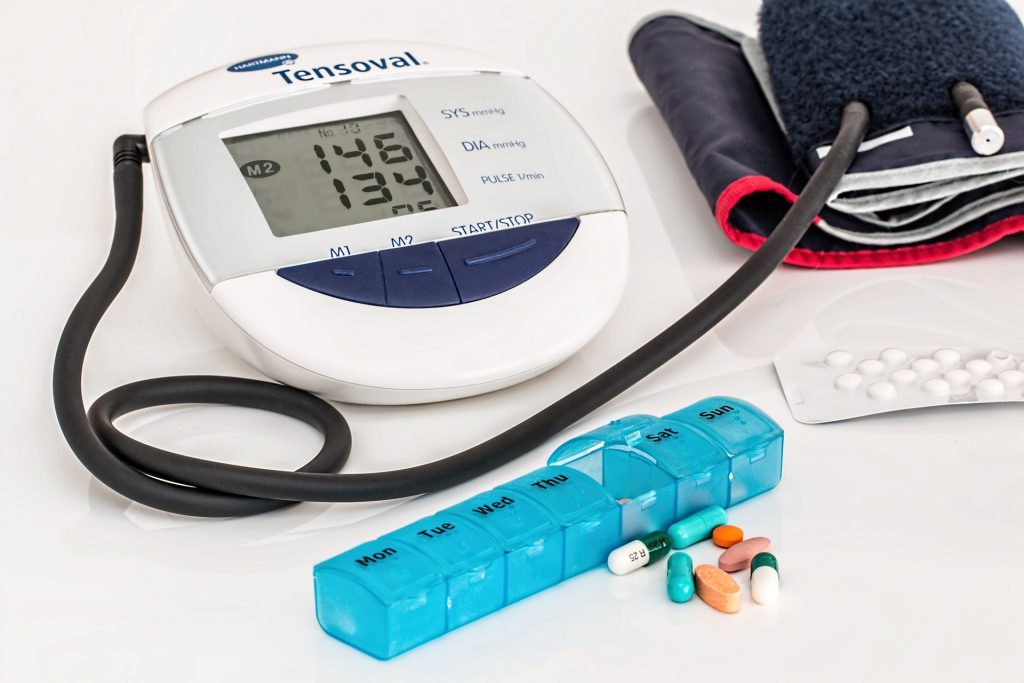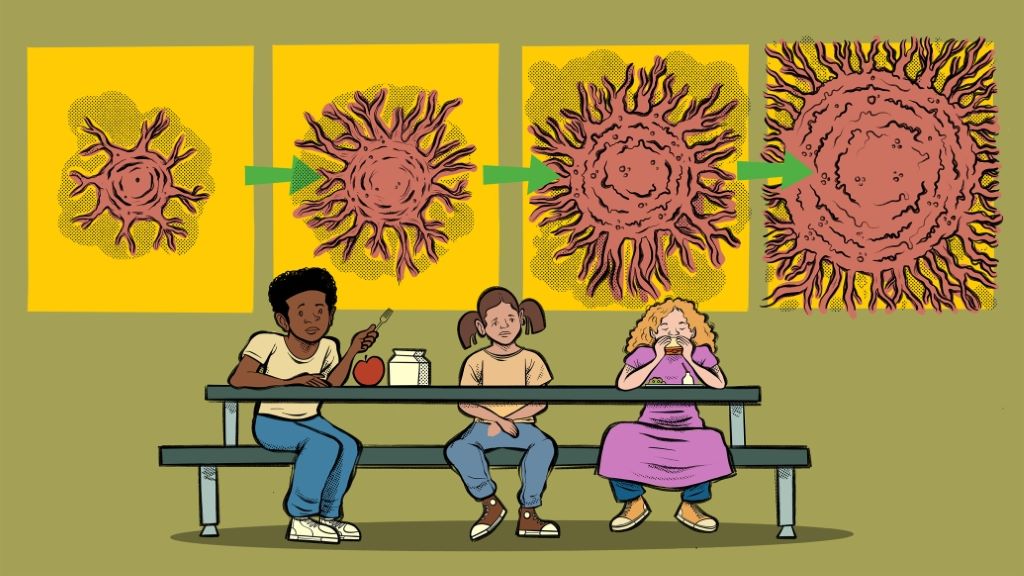Chronic Pain May Increase Hypertension Risk in Adults
Depression resulting from pain may be a contributing factor in the development of high blood pressure, finds a new study

Chronic pain in adults may increase their risk of high blood pressure, and the location and extent of pain and if they also had depression were contributing factors, according to new research published in Hypertension, an American Heart Association journal.
An analysis of health data for more than 200 000 adults in the US found that those who reported chronic pain throughout their bodies were more likely to develop high blood pressure than people who reported no pain, short-term pain or pain limited to specific areas.
“The more widespread their pain, the higher their risk of developing high blood pressure,” said lead study author Jill Pell, MD, CBE, Professor of Public Health at the University of Glasgow. “Part of the explanation for this finding was that having chronic pain made people more likely to have depression, and then having depression made people more likely to develop high blood pressure. This suggests that early detection and treatment of depression, among people with pain, may help to reduce their risk of developing high blood pressure.”
High blood pressure and hypertension occurs when the force of blood pushing against the walls of blood vessels is too high, and it increases the risk of heart attack or stroke. High blood pressure as well as stage one or stage two hypertension, which includes blood pressure measures from 130/80mmHg to 140/90mmHg or higher, affects nearly half of all adults in the US, and is the leading cause of death in the US and around the world, according to the 2025 joint American Heart Association/American College of Cardiology guideline endorsed by 11 other organisations.
According to previous research, chronic musculoskeletal pain – pain in the hip, knee, back or neck/shoulder that lasts for at least three months – is the most common type of pain in the general population. This study investigated the associations between the type, location and extent of pain throughout the body and the development of high blood pressure.
Inflammation and depression are both known to raise the risk of high blood pressure; however, no prior studies have examined the extent to which the link between pain and high blood pressure is mediated through inflammation and depression, Pell said.
In this study, participants completed a baseline questionnaire and provided information about whether they had experienced pain in the last month that interfered with their usual activities. They noted if the pain was in their head, face, neck/shoulder, back, stomach/abdomen, hip, knee or all over their body. If they reported pain, they indicated whether pain had persisted for more than three months.
Depression was gauged based on participants’ responses to a questionnaire that asked about the frequency of depressed mood, disinterest, restlessness or lethargy in the previous two weeks. Inflammation was measured with blood tests for C-reactive protein (CRP).
After an average follow-up of 13.5 years, the analysis found:
- Nearly 10% of all participants developed high blood pressure.
- Compared to people who did not have pain, people with chronic widespread pain had the highest risk of high blood pressure (75% increased risk), while short-term pain was associated with a 10% higher risk and chronic localized pain was linked with a 20% higher risk.
- When comparing sites of pain to people without pain, the analysis showed that chronic, widespread pain was associated with a 74% higher risk of developing high blood pressure; chronic abdominal pain with a 43% higher risk; chronic headaches with a 22% higher risk; chronic neck/shoulder pain with a 19% higher risk; chronic hip pain with a 17% higher risk; and chronic back pain with a 16% higher risk.
- Depression (11.3% of participants) and inflammation (0.4% of participants) accounted for 11.7% of the association between chronic pain and high blood pressure.
“When providing care for people with pain, health care workers need to be aware that they are at higher risk of developing high blood pressure, either directly or via depression. Recognising pain could help detect and treat these additional conditions early,” Pell said.
Daniel W. Jones, MD, FAHA, chair of the 2025 American Heart Association/American College of Cardiology High Blood Pressure Guideline and dean and professor emeritus of the University of Mississippi School of Medicine in Jackson, Mississippi, said, “It is well known that experiencing pain can raise blood pressure in the short term, however, we have known less about how chronic pain affects blood pressure. This study adds to that understanding, finding a correlation between the number of chronic pain sites and that the association may be mediated by inflammation and depression.”
Jones, who was not involved in this research, suggests further exploration of the relationship through randomized controlled trials of approaches to pain management and blood pressure, especially the use of Nonsteroidal Anti-Inflammatory Drugs (NSAIDs) such as ibuprofen, which may also cause an increase in blood pressure.
“Chronic pain needs to be managed within the context of the patients’ blood pressure, especially in consideration of the use of pain medication that may adversely affect blood pressure,” said Jones.
The study’s limitations include that participants were middle- and older-aged adults who were mainly white people of British origin; therefore, the study’s findings may not be generalizable to people from other racial or ethnic groups, living in other countries or adults in other age groups. In addition, the information about levels of pain was self-reported, and the study relied on clinical diagnostic coding, a one-time pain assessment and two blood pressure measurements.
Study details, background and design:
- The study reviewed data from the UK Biobank, a large population-based study that recruited more than 500 000 adults who were ages 40-69 when they joined the study between 2006 and 2010. Participants lived in England, Scotland and Wales.
- This analysis included 206,963 adults. The average age of the participants was 54 years; 61.7% were women, and 96.7% were white adults.
- Among all participants, 35.2% reported experiencing chronic musculoskeletal pain; 62.2% reported chronic pain at one site of the body; 34.9% reported chronic pain at two to three musculoskeletal sites; and 3.2% reported pain at four sites.
- When compared with participants who reported no pain, participants reporting pain were more likely to be women, have an unhealthy lifestyle, larger waist circumference, higher body mass index (BMI), more long-term health conditions and live in areas with higher unemployment, lower home and car ownership and more overcrowding.
- The researchers adjusted for factors associated with both pain and high blood pressure, including self-reported smoking status, alcohol consumption, physical activity, total sedentary time, sleep duration, and fruit and vegetable intake.
- UK Biobank data was collected at the participants’ baseline appointment through a touch-screen questionnaire, interview, physical measurements (height, weight, BMI, waist circumference, blood pressure measurement) and blood samples taken for cholesterol and blood sugar (hemoglobin A1c).
- The participants’ hospital records identified incidences of high blood pressure, which were defined using the standard International Statistical Classification of Diseases and Related Problems and diagnostic codes (ICD-10 codes).
- The study’s follow-up duration was determined by measuring the time from the baseline date until one of the following events occurred: a recorded diagnosis of high blood pressure, the participant’s death or censoring due to reaching the end of follow-up records. The earliest of these events marked the end of the follow-up period for each participant.
Co-authors, disclosures and funding sources are listed in the manuscript.










